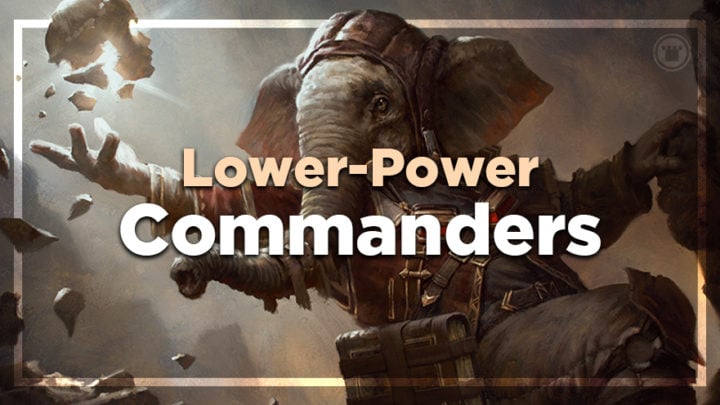Sometimes, it can start to feel like you’re playing the same game of Commander over and over again. The players in your playgroup haven’t refreshed their decks for a while, you’re wise to their tricks, and you’re stuck on what to try building next. If you’re lacking inspiration, then maybe it’s time to play some low-power Commander.
Decks Feeling Stale
Even your favorite deck can end up feeling a little stale from time to time. This can, of course, be remedied by upgrading and tinkering with it when new cards release. However, it rarely manages to scratch that itch of wanting to experiment in a new sandbox. One of the best parts of Magic is how varied the gameplay is. From set to set, Wizards manages to keep things fresh.
I’ve spoken before on how important keeping gameplay fresh is for me, and also on conserving design space. My retinue of decks seeks to be constantly providing novel experiences by avoiding similar builds, and cutting shared instances of the same card where possible. I’ve got both Sigarda, Host of Herons and Syr Gwyn, Hero of Ashvale as Voltron-themed decks, for example, but both couldn’t be more different — one’s Enchantress, and the other all about Equipment.
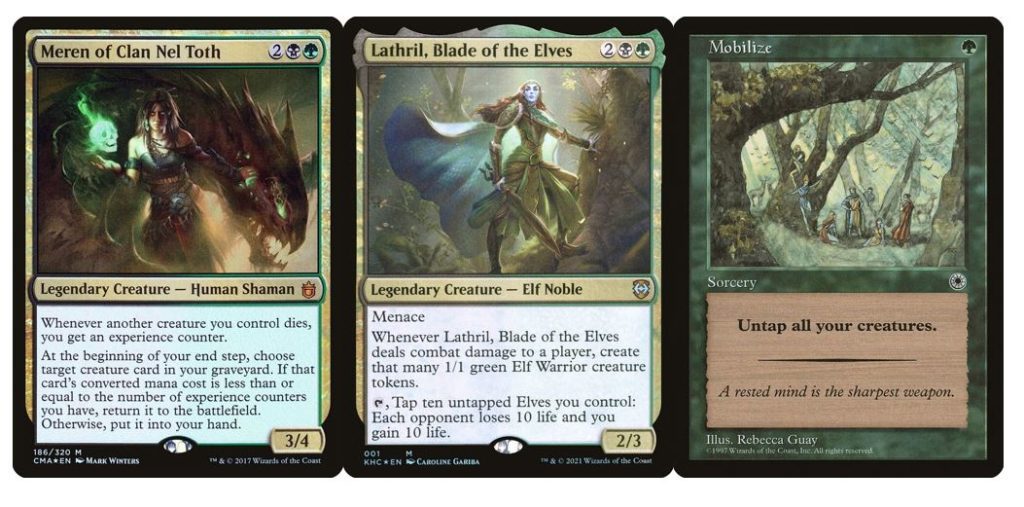
Likewise, my Golgari decks are pretty different, too: Meren is a classic value Aristocrats build with an X-spell finish, while Lathril, Blade of Elves is built entirely around getting Lathril’s ability to go off with cards like Mobilize. While I could be more consistent with the good ol’ Craterhoof Behemoth, I instead opted to jump through more hoops; sometimes, jumping through hoops is more fun.
The thing is, at higher levels of play, you’ll end up playing the same cards more often between decks, and the amount of space for sub-optimal cards and strategies, including pet cards, will often be close to zero. I always try to add a pet card to personalize even my higher-power decks (such as running Time to Reflect instead of the more versatile Swords to Plowshares in my Varina Zombies list), but that often doesn’t satisfy the need to experiment.
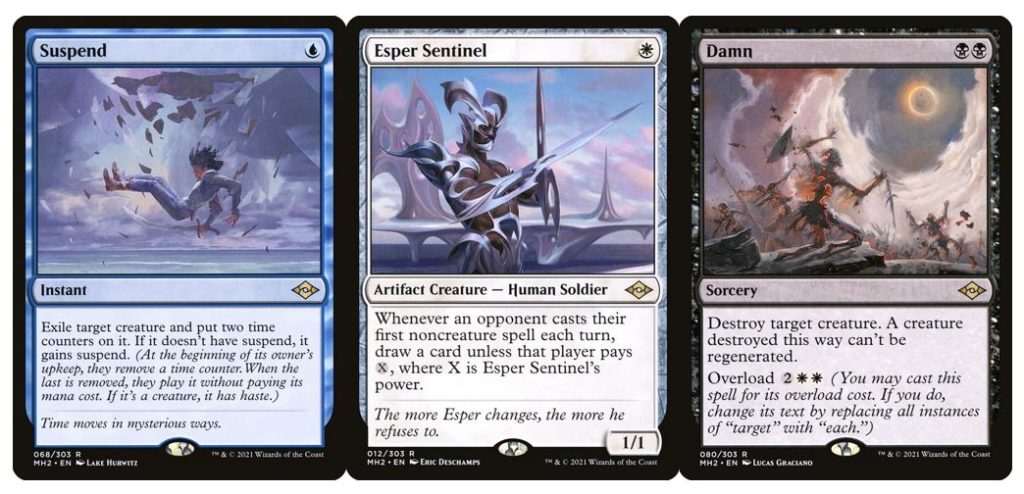
There are more and more “staples” printed every year, and more and more cards that are touted as “must play” cards. It’s hard to argue with wanting to include Esper Sentinel in every white deck, Suspend in every blue one, or Damn in every Orzhov one, and that’s only the tip of the iceberg.
When decks can feel like they’re becoming “solved,” there’s one surefire way to have some more fun. Just take your foot off the pedal!
Lower-Power Commander
There’s an important distinction to make between Lower-Power Commander and what many refer to as “jank”. Case in point: I have a Lord of the Rings deck, led by Kenrith, the Returned. It’s a Vorthos love letter to Return of the King, and as much as it has a powerful commander, it’s a really… unimpressive pile. It has a couple of fun synergies, but because every spell — from removal, to draw, to creatures — has to have an analog to the story, it’s light on interaction and finishing power.
Many people imagine this kind of deck when they hear “Lower-Power Commander”, and I think that assuming games will end up like this is just wrong. There are plenty of tiers of deck “power” before you get to jank, and some of the most exciting games I’ve had recently are playing against these styles of decks.
It can be a rewarding experience with many benefits for your own deck building. Here are some reasons to wind things down a little next time you sit down and shuffle up.
Exciting to Watch
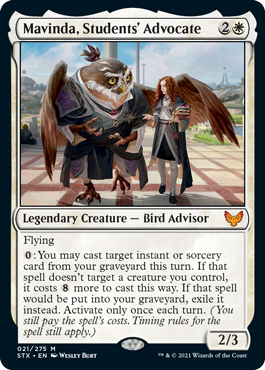
I had the pleasure of sitting across from a Mavinda, Student’s Advocate deck last week. Piloting it was prophetofares, a regular on my Discord, and it was honestly so much fun to sit and watch the deck do its thing. A deck on the power level of Mavinda is going to struggle to perform to the best of its ability at high-power tables, due to its inherent weaknesses. Still, the deck isn’t bad — in fact, it presented diverse and scary threats in no time, and drew a bunch of cards.
You won’t get to watch decks like this shine if the rest of the table is too set on winning, and too set on playing good-stuff builds. EDH is a social game, so be social. Let people have some fun, and you might be pleasantly surprised.
Replayability
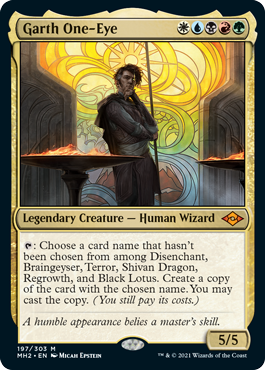
Replayability is a big factor in how fun a deck can be. I like to put in alternate win conditions and limit tutors in my builds — or at least avoid tutoring for something like Smothering Tithe every game, as it gets old pretty quick. My good friend Anthony Alongi, a Commander veteran, showcased his Garth One-Eye deck recently, and I was intrigued to learn more after the game. It turns out that Anthony took Garth’s spellbook to a whole other level, drawing his spells from hundreds of iconic cards from the history of Magic. Between games, the mana base is separated, and the spells are randomly selected from a greater number than required for a deck.
This is a big flavor win, and can also make for some memorable games when certain combinations of cards find themselves in the same deck. Keeping a deck replayable is as simple as mixing up the spells in the deck, and by doing this, you can reduce the consistency a little, which helps you play at less explosive tables.
Variance Without Chaos

Everyone enjoys a little variance and a little chaos in EDH from time to time, but some people aren’t a fan of absolute chaos, a la Warp World. Enter Gor Muldrak!
Bobbie-Christine’s Gor Muldrak deck is a treat to play against. It’s centered around tokens and changing the sizes of creatures with spells like Mass Diminish and Pongify. With some fun “tricksy” spells for messing with combat, you’re never quite sure what you’re going to get. She is kind enough to run Arcane Denial, though, so if you do have your spell countered, you’ll at least get to draw some cards.
Because the deck doesn’t have a fast win condition, and plays the game by giving resources to other opponents, it’s suited for tables that are a little slower and more relaxed. The resulting gameplay makes for interesting combat steps, and it helps when the pilot is as fun as the deck.
EDH is as much about the journey as the destination — keep that in mind.
Powerful Interactions

When you’re searching for inspiration on what to try next, you might find it in unlikely places. I never knew Hellkite Igniter existed until I saw Chris cast one after a copied Brass’s Bounty, and by that point? It was too late!
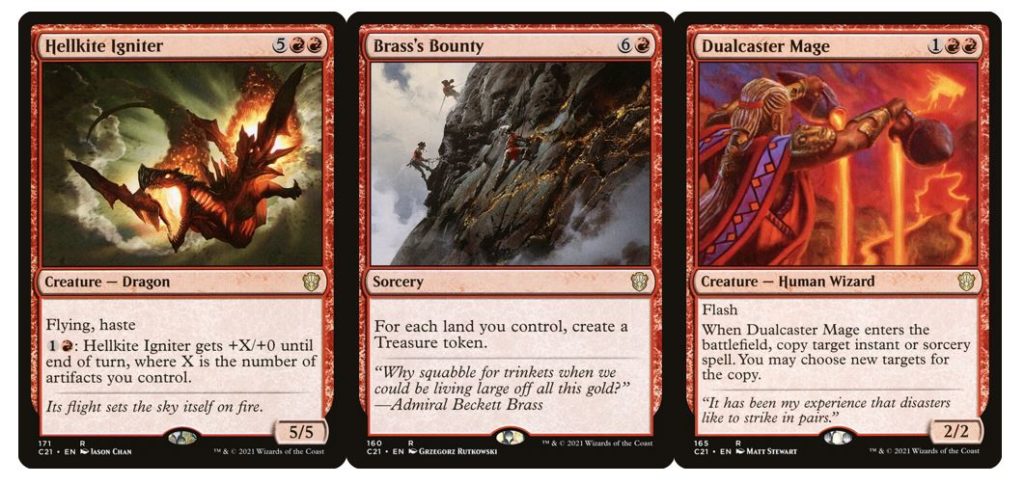
Gadrak isn’t a super popular commander by any means, but Chris’s deck offered something funky and fresh at the table, especially when it came to card interactions. Sometimes, seeing a whole deck work might give you inspiration; other times, it’s little combos or synergies. These ideas can often spawn entire decks, and in this case, that’s exactly what happened. I built Akiri & Silas Renn’s Treasure Hunt afterward.
Delightful Synergy
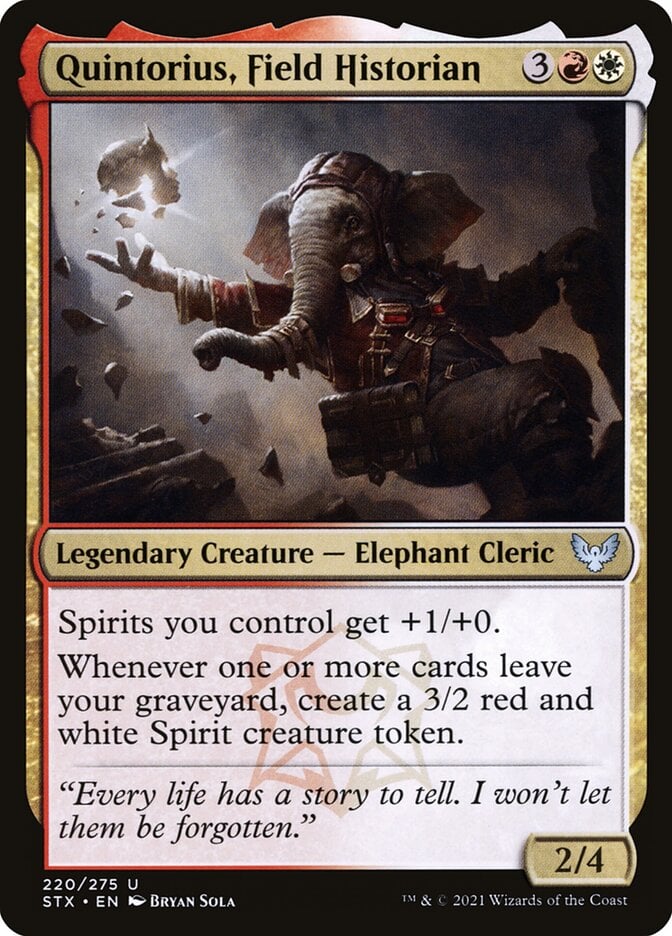
Above all, the best part about playing at more relaxed tables is seeing underplayed commanders get their chance to shine. Oka’s Quintorius deck was one such deck I got to see lately, and I think I ended up enabling it in the end by playing Rogues led by Anowon, the Ruin Thief! It was a joy to see the synergy shining, with select commons and uncommons that would otherwise be passed up getting to do solid work in the deck. This is another deck that would fare less well at higher-stakes tables, where easily accessible graveyard hate and more powerful strategies might beat it into the ground before it gets going.
Talking Lower Power
The most important thing to remember when sitting down for a game of more relaxed, or more social Commander, is to make sure you’re aligned on the goals of the game. One of my general rules is I won’t destroy someone’s first Burnished Hart or their Sword of the Animist before it’s mana-neutral (two lands into play). While that ethos might work just as well at different levels of play, it’s more valuable to have such considerations at more relaxed tables. The goal should be to let everyone’s deck have a chance to shine, and so it might not be correct to go for the “spikey” plays.
If I had one piece of advice to highlight, it would be to always have a lower-power deck available to help people test their own lower-power decks. There’s nothing worse than putting time and effort into a more “cute” build, only to have it torn to shreds repeatedly by an unempathetic playgroup.
You can learn a bunch and get a lot of inspiration by leaving the haymakers at home. Give it a go sometime — you won’t be let down. Let me know your lower-power stories on Twitter. What’s been exciting to see across the table?

Kristen is Card Kingdom’s Head Writer and a member of the Commander Format Panel. Formerly a competitive Pokémon TCG grinder, she has been playing Magic since Shadows Over Innistrad, which in her opinion, was a great set to start with. When she’s not taking names with Equipment and Aggro strategies in Commander, she loves to play any form of Limited.

